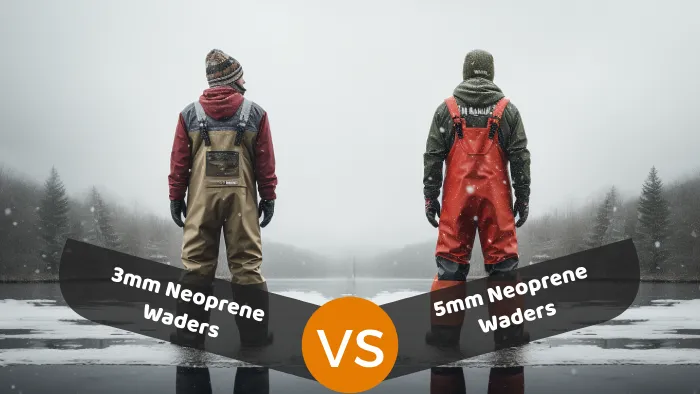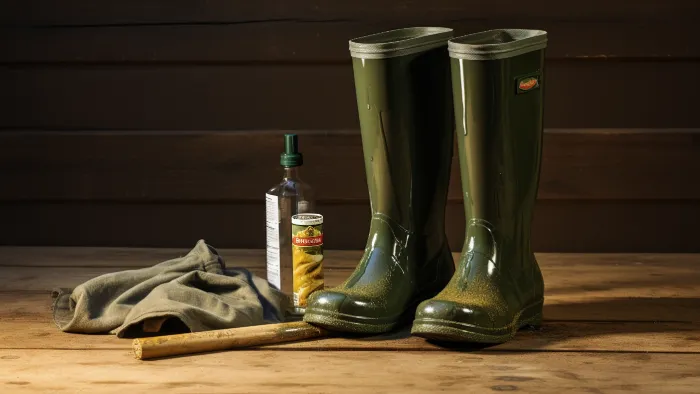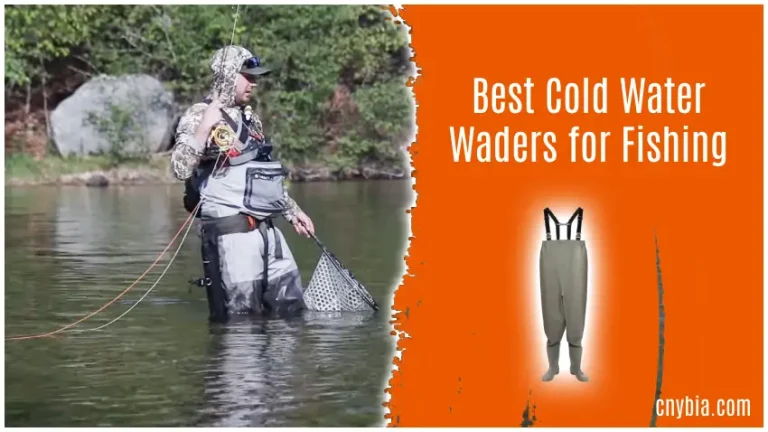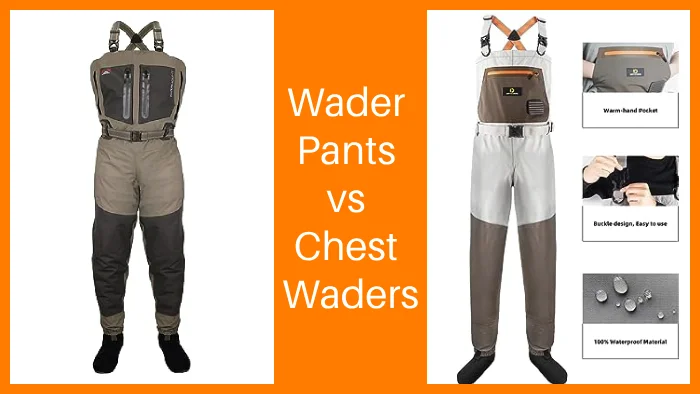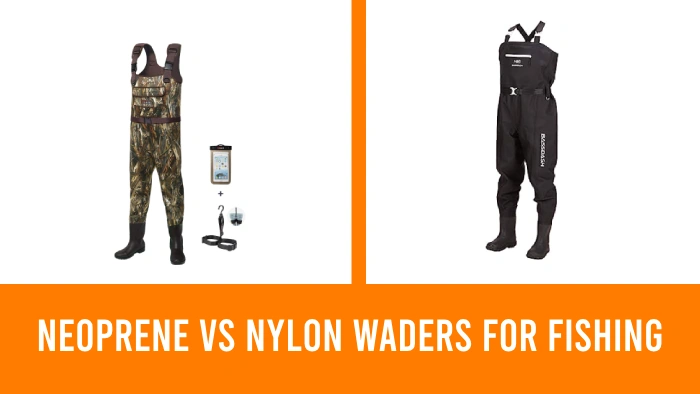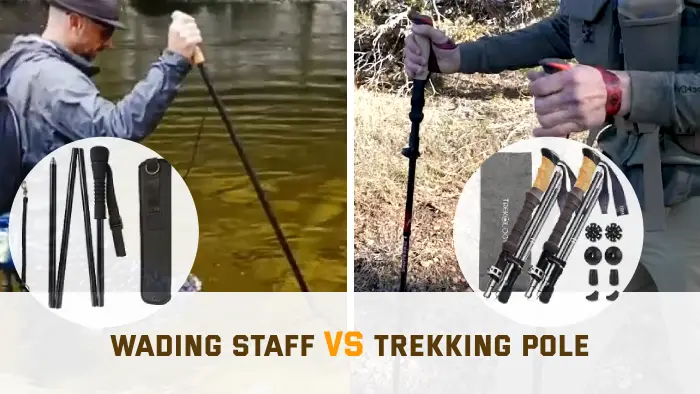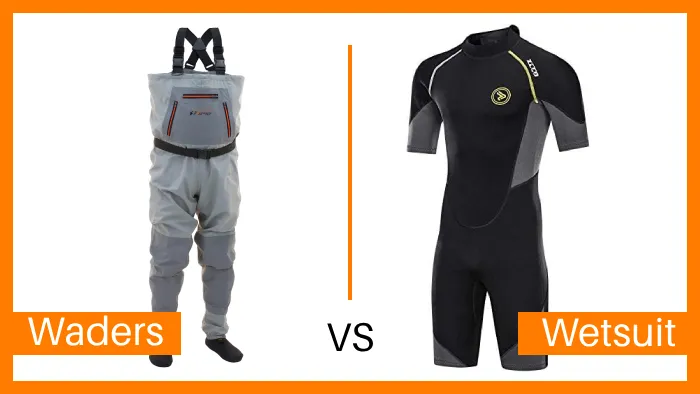3mm vs 5mm Neoprene Waders: Which is Best for Fishing?
Are you tired of wet, uncomfortable feet while fishing? You don’t want to miss the battle of 3mm vs. 5mm fishing neoprene waders.
5mm waders provide more insulation and are better suited for colder temperatures, while 3mm waders are more suitable for moderate weather conditions. 3mm waders offer greater flexibility, allowing for easier movement and agility, while 5mm waders may be slightly more restrictive.
Let’s examine all the differences between 3mm and 5mm neoprene fishing waders to help you make an informed decision.
The Differences Between 3mm vs 5mm Fishing Neoprene Waders
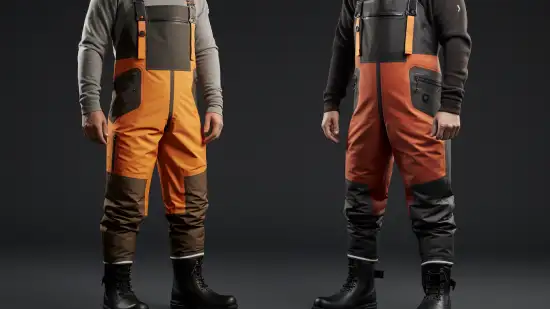
When considering the differences between 3mm and 5mm fishing neoprene waders, there are several key points to keep in mind. Here are the most ones:
- Insulation and warmth
- Flexibility and mobility
- Weight
- Durability
- Buoyancy
- Breathability
- Comfort range
- Layering
- Price
- Versatility
Let’s see each of these differences in more depth.
No 01: Insulation and Warmth
For better insulation and warmth in colder waters, you’ll want to consider 5mm neoprene fishing waders. These waders offer significantly better insulation compared to their 3mm counterparts, making them better suited for extended periods in icy conditions.
The thicker 5mm neoprene material helps retain body heat, keeping you warmer during your fishing adventures.
In contrast, 3mm neoprene waders provide good insulation and warmth in mild to moderate temperatures. Their thinner material makes them a better choice for the more temperate climates.
No 02: Flexibility and Mobility
In terms of flexibility and ease of movement, thinner neoprene waders offer greater agility and are well-suited for activities like fly fishing or hiking. The 3mm thickness of these waders provides increased flexibility, allowing you to move more freely.
Whether you need to cast your line or navigate difficult terrain, the thinner material allows for a greater range of motion. This flexibility is especially beneficial for activities that require more agility and quick movements.
On the other hand, 5mm neoprene waders, although still flexible, might feel slightly less agile due to their thicker material. While they still provide some mobility, they are better suited for less movement activities or where warmth is the primary concern.
No 03: Weight
In general, 3mm waders are considered to be lighter in weight than their 5mm counterparts. This is due to the thinner material used in their construction, which makes them more agile and easier to maneuver.
For anglers who are planning on spending extended periods of time in the water, this can be a significant advantage as it helps to reduce fatigue and increase overall satisfaction levels.
Conversely, 5mm waders are typically heavier due to the added thickness of the neoprene. While this can provide extra warmth and protection in colder water conditions, it can also increase fatigue during long fishing sessions.
For anglers who prioritize warmth and protection above all else, the added weight of 5mm waders may be a small price to pay for the benefits they provide.
No 04: Durability
Consider how the neoprene material’s thickness impacts the waders’ durability.
Thinner neoprene waders, such as the 3mm variety, offer slightly less durability compared to their thicker counterparts. They are more susceptible to abrasions and punctures, especially in rugged fishing environments. The thinner material may not hold up as well against rough handling and challenging terrains.
Conversely, 5mm neoprene waders provide increased resistance to wear and tear. Their thicker construction makes them more suitable for enduring fishing demands in tough conditions.
With their enhanced durability, these waders are better equipped to handle the rigors of outdoor activities, ensuring that they can last longer and withstand rough treatment in rougher environments.
No 05: Buoyancy
Thinner 3mm neoprene waders offer a more natural feel in the water, while the thicker 5mm neoprene waders provide increased buoyancy. Regarding buoyancy, the thickness of the neoprene plays a crucial role. Here’s what you need to know:
- Thinner 3mm neoprene waders have less inherent buoyancy due to their thinner material. This can be preferred by anglers who want a more natural feel in the water and don’t require significant flotation.
- Meanwhile, the increased thickness of 5mm neoprene waders offers slightly more buoyancy. This can be advantageous when wading through deeper waters or when additional flotation is desired.
No 06: Breathability

When deciding between 3mm and 5mm neoprene waders, it’s important to keep in mind the breathability factor. Thinner 3mm waders are known to be more breathable compared to their 5mm counterparts.
This is because the thinner material allows for better moisture wicking and ventilation, which can be beneficial during warmer weather conditions.
Alternatively, 5mm waders are less breathable but may trap more body heat, making them better suited for colder conditions where breathability is less of a concern.
While the 3mm waders provide better ventilation, the 5mm waders are designed to provide more insulation and retain heat, making them a suitable choice for colder fishing trips.
No 07: Comfort Range
To determine your comfort range, assess the temperature of the water you will be in and choose waders accordingly. The thickness of neoprene plays a crucial role in determining the comfort level.
Waders with 3mm neoprene are best suited for mild to moderately cold conditions. They provide sufficient warmth but may become uncomfortable in very cold waters and for extended exposure.
On the other hand, waders with 5mm neoprene are designed for colder conditions and can keep you comfortable in icy waters for longer periods. The increased thickness enhances insulation, allowing you to withstand lower temperatures.
No 08: Layering
Layering clothing under your waders can provide added warmth and comfort in varying weather conditions.
During layering, 3mm waders have an advantage over 5mm waders. The thinner nature of 3mm waders allows for easier layering of clothing underneath. This means that you can easily adjust your clothing according to the changing weather conditions.
On the other hand, layering under 5mm waders might be a bit more challenging due to the tighter fit resulting from the thicker material. The tighter fit can make it difficult to add multiple layers without feeling restricted.
No 09: Price
Fishing waders made from 3mm neoprene are often considered a budget-friendly option in comparison to their 5mm counterparts. This is primarily because 3mm neoprene material is less thick and offers less insulation, making it less expensive to manufacture.
As a result, 3mm neoprene waders are usually priced lower than 5mm waders.
Then again, waders made from 5mm neoprene are generally priced higher due to the increased material thickness and enhanced insulation that they offer. The thicker material provides more protection against the cold water, allowing anglers to stay warm and comfortable in harsh conditions.
Despite that, the added insulation and thicker material also result in higher manufacturing costs, which is reflected in the higher price tag.
No 10: Versatility
When considering versatility, you should evaluate how well the waders can adapt to different weather conditions and water temperatures.
3mm neoprene waders are a great option for a wide range of weather conditions, as they offer a good balance between insulation and breathability. They are suitable for both cool and moderately cold waters, making them versatile.
On the other hand, 5mm neoprene waders are more specialized and ideal for colder temperatures and more extreme conditions. The thicker material provides additional insulation, ensuring that you stay warm even in harsh weather.
While they may be less versatile than 3mm waders, they excel in providing superior warmth and protection in colder climates.
Comparison Table Between 3mm and 5mm Neoprene Waders
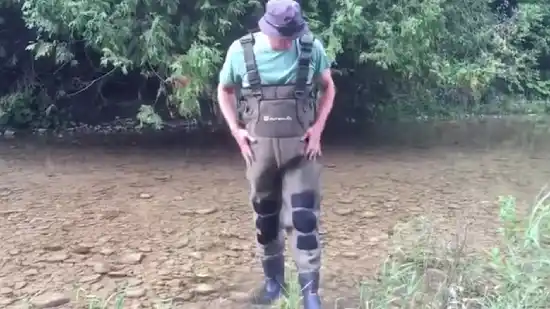
| Features | 3mm | 5mm |
| Insulation and Warmth | Moderate insulation for milder conditions | Enhanced insulation for colder waters |
| Flexibility and Mobility | High flexibility for agility | Slightly reduced mobility due to thickness |
| Weight | Lighter: easier to maneuver | Heavier: might cause fatigue during long use |
| Durability | Slightly less durable | More durable, suited for rough environments |
| Buoyancy | Less inherent buoyancy | Slightly more buoyant in water |
| Breathability | More breathable, suitable for warmer weather | Less breathable, retains body heat better |
| Comfort Range | Suitable for mild to moderately cold conditions | Designed for extended comfort in colder waters |
| Layering | Easier to layer clothing underneath | Layering might be slightly more challenging |
| Price | Generally less expensive | Typically priced higher due to added insulation |
| Versatility | Versatile across various conditions | Specialized for extreme cold and harsh conditions |
How do I know what size fishing waders to buy?
To determine what size fishing waders to buy, accurately measure your height and weight and consult the manufacturer’s sizing chart for the specific wader model you’re interested in. Measuring your height and weight accurately is crucial to ensure a proper fit.
When measuring, consider any clothing layers or potential extra padding you might wear while fishing.
Additionally, consider the wader’s fit recommendations. Some anglers prefer a snug fit, while others prefer a little more room for layering. If you’re unsure about the size, it’s advisable to try on waders in-store or consult with your chosen brand’s customer service when purchasing online.
What not to wear under neoprene waders?
Avoid wearing cotton under neoprene waders as it can absorb and retain moisture, leading to discomfort and potential dangers in cold weather. Instead, opt for specialized insulating layers designed for wading. Here are four items you should avoid wearing under neoprene waders:
- Cotton absorbs moisture and retains it, making you feel wet and cold.
- Denim is not suitable for wading as it becomes heavy when wet and restricts movement.
- While wool is a good insulator, it can become heavy and uncomfortable when wet.
- Wearing excessively thick or bulky clothing can restrict movement and make it difficult to maneuver in the water.
Do your feet get wet in fishing waders?

Because of the sealed neoprene booty, your feet won’t get wet in fishing waders. The design of the waders ensures that water cannot enter the foot area, keeping your feet dry while you are immersed in the water.
This feature provides both comfort and protection during fishing activities. Unlike wet wading, where water can flow into the wading boot and guard sock, the neoprene booty in fishing waders prevents any water from entering.
The neoprene material is designed to create a waterproof seal, effectively blocking any moisture. By keeping your feet dry, fishing waders enhance your overall experience, allowing you to focus on your fishing without any discomfort or distractions caused by wet feet.
3mm or 5mm Neoprene Waders: Don’t Let the Cold Water Ruin Your Fishing Trip
When deciding between 3mm and 5mm fishing neoprene waders, consider the water temperature and your personal comfort.
The thicker 5mm waders provide better insulation and are ideal for colder conditions, while the 3mm waders offer more flexibility and are suitable for milder climates.
Remember to choose the right size waders for a proper fit and avoid wearing cotton clothing underneath to prevent moisture retention.
With the right waders, your fishing adventures will be comfortable and dry, allowing you to fully enjoy the experience.

